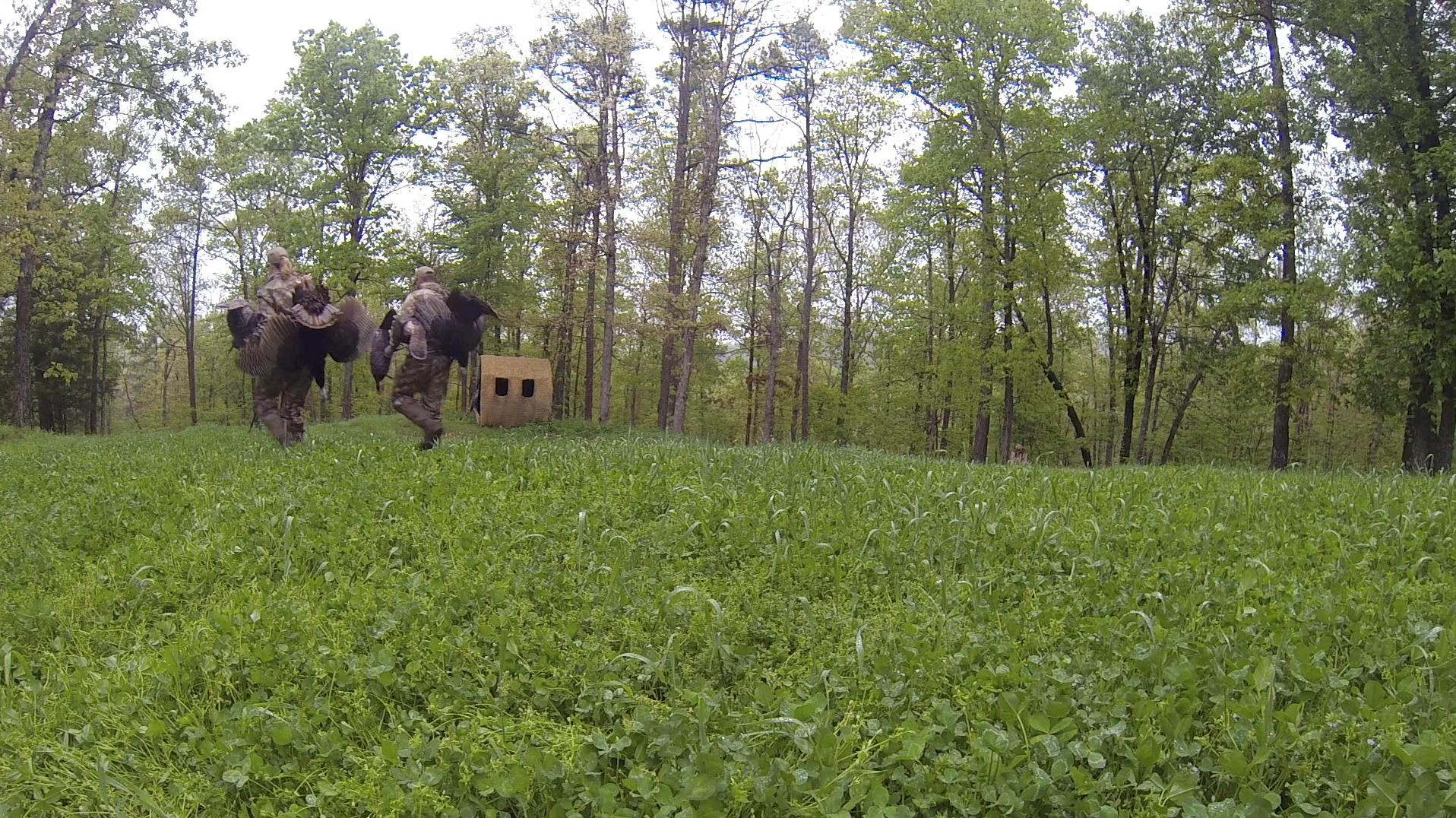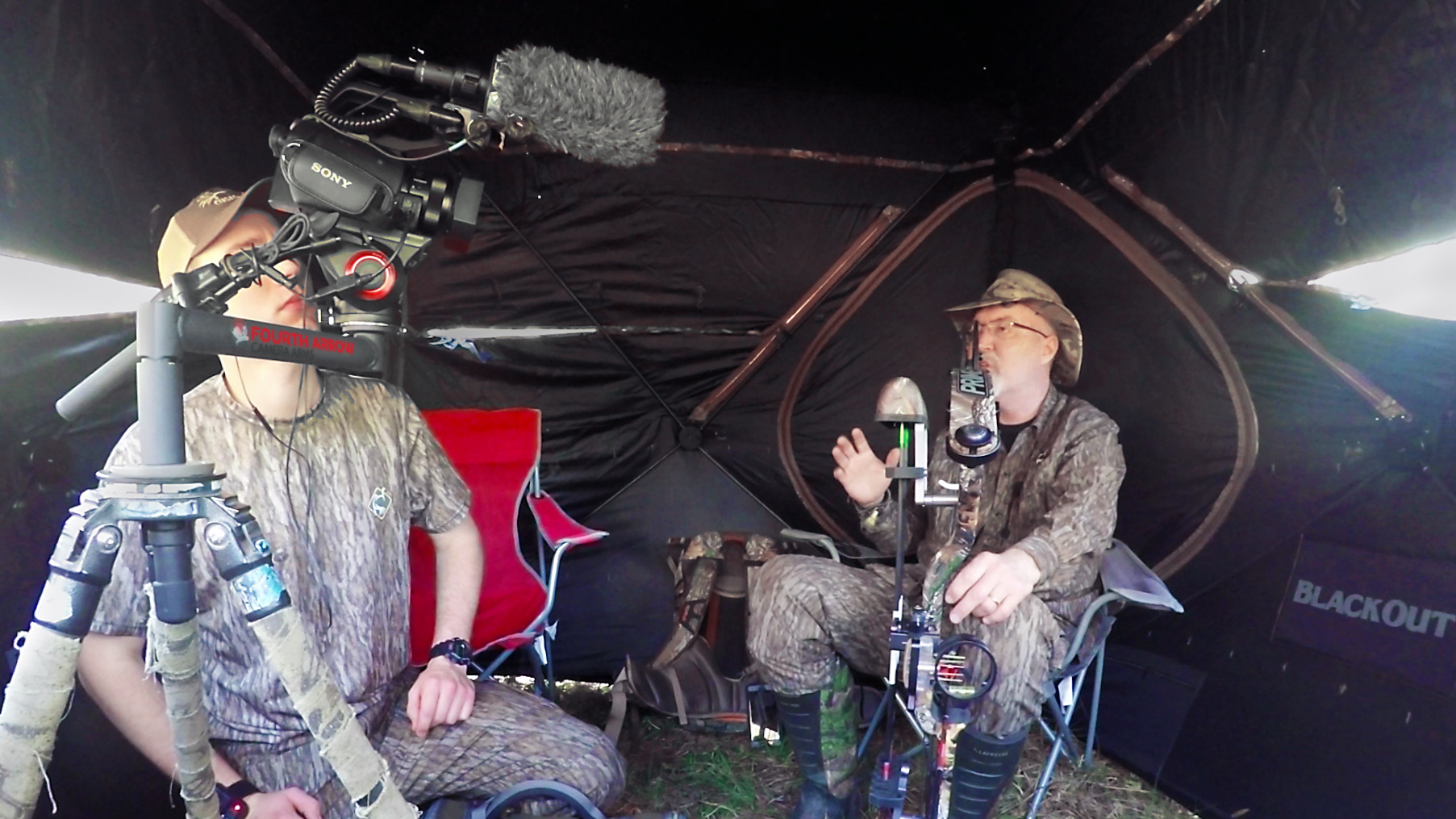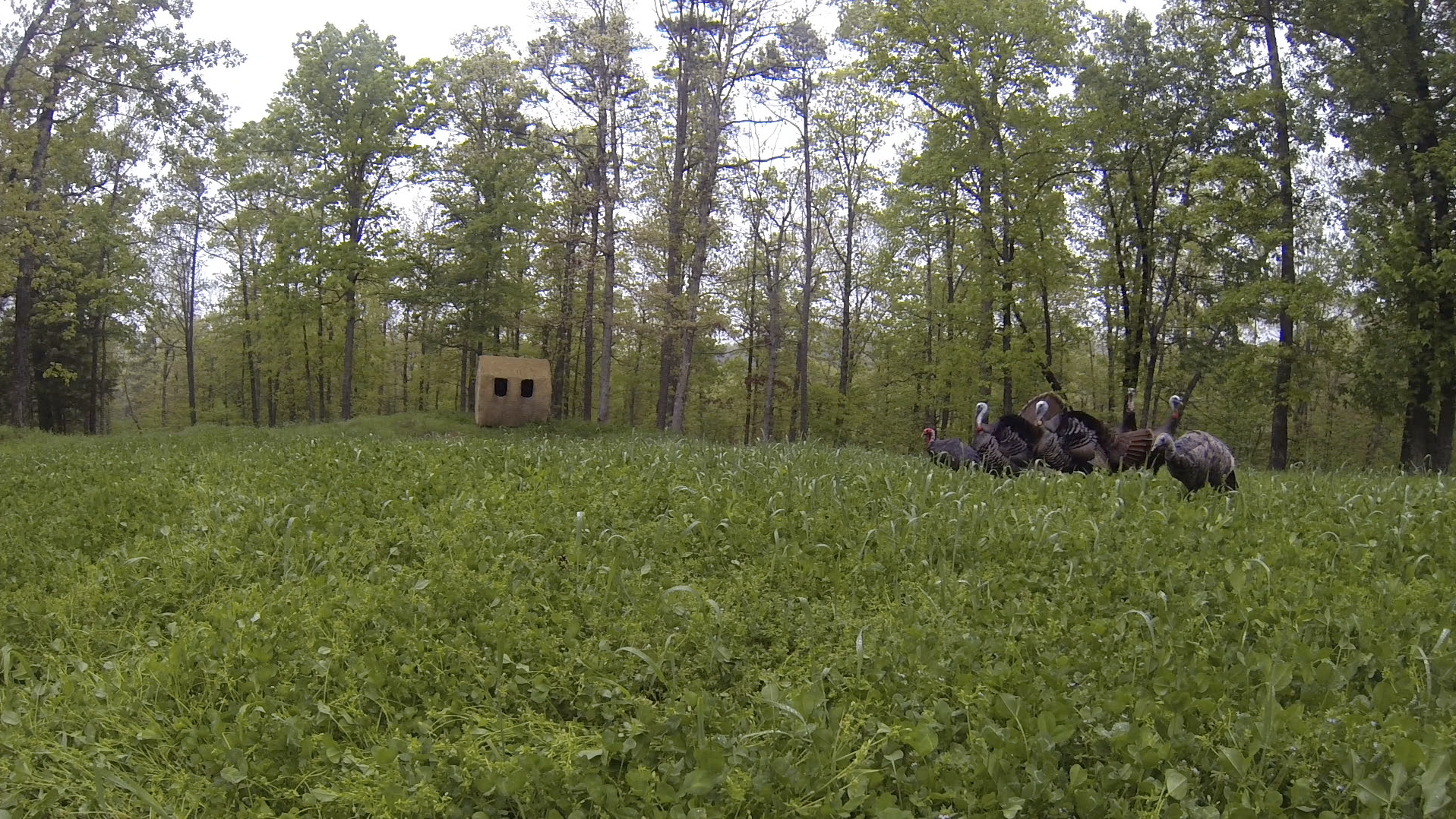4 Ways You Can Improve Your Turkey Hunting Footage
Filed under: Hunting Blog, Turkey Hunting
Turkey season is upon us! One thing more turkey hunters are doing is filming their own turkey hunts. It seems there are two types of filmed turkey hunts. Amazing films that capture everything turkey hunting is about and films that show a gobble or two, some blurry footage of a turkey, and a loud boom. Dr. Grant Woods of GrowingDeer films countless turkey hunts every year. Woods loves turkey hunting and he enjoys capturing the hunt on film. Below are a few of his tips to ensure you end up with a film all your friends will want to watch.

KEEPING CAMERA GEAR CONCEALED
Most turkey hunters run and gun at some point during their season. Unlike deer hunting where most hunters are stationary and can take their time setting up their camera, turkey hunting requires hunters to be on the move which often makes filming more difficult. “Often turkey hunters are forced to set up in a hurry so little details like making sure the camera is completely concealed gets missed. A turkey will spook the moment they see a big black camera or a bright shiny camera lens. We try to hide the cameraman near a big tree or bush. Then we cover the camera with a cloth so the birds can’t see the camera or the lens. Carrying all this around when we are hunting can be difficult, but it is worth the effort because we spook fewer birds and get better footage,” Woods explained.
A DECOY IS A MUST HAVE TOOL
Turkey hunters often debate whether they should use decoys when turkey hunting because decoys can sometimes spook birds. According to Woods, decoys are often required when filming a hunt. “A decoy takes the birds’ attention off where the calling is coming from and then they focus on the decoy. We put the decoy about twenty yards from our set up and even closer if we are bow hunting. With a decoy close, we can get good footage of a tom when he comes into the decoy,” Woods added.
HUNTING FROM A BLIND
When Woods and his team notice a tom and his ladies are regularly hanging out in a food plot or field, they often set up a Redneck Blind near the field edge. “The wonderful thing about hunting out of a blind is it conceals your movement and the turkeys don’t seem to get spooked by a blind. They don’t pay attention to them. In addition, all the filming from a blind is much easier than running and gunning. Every turkey hunter should have a blind, especially if a person is going to bow hunt. A blind conceals the cameraman and the hunter when they draw their bow,” Woods noted.

THE REX ARM
One item that has changed the way Woods and his team films turkey hunts is the Rex Arm from Fourth Arrow Camera Arms. This camera arm can be used with almost any tripod and it allows the hunter to move the arm with the camera attached without moving the tripod when filming. “Turkeys often come strutting in and moving around. In order to keep them in the viewfinder, we have to move the tripod. The Rex arm is an efficient system, allowing the hunter to utilize 360 degree movement within a 10-inch radius of the tripod. Now we can easily move the camera and keep up with the gobbler without having to jerk the tripod around. It minimizes movement and increases the quality of our footage,” Woods added.
Filming a turkey hunt is fun and exciting. Hopefully the tips above will help you produce a better film this spring that you will be able to enjoy for years to come.




